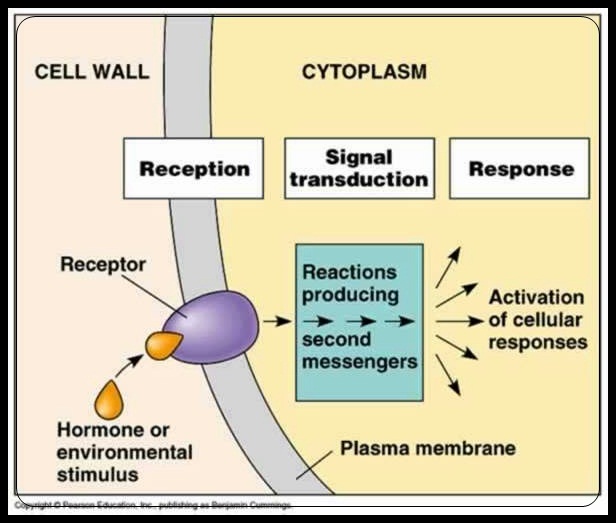Haseung Jun
Annika Tekumulla
AP Biology 🧬
358 resourcesSee Units
Cell Communication
As we talked about earlier, cells communicate and respond to changes in the environment. The environment also has the ability to influence cells in order to elicit a response.
Many things in the environment can alter the cell cycle. Some examples of factors are temperature, light, and chemicals. When these factors are present, it can influence how the cell responds to the environment.
Signal transduction can also result in changes in types of cellular response such as gene expression and cell function.
A good example of cell communication is "quorum sensing" done by bacteria cells. The bacteria infect a host with toxin and produce a ligand. Once the concentration of the ligands reaches a certain amount, it becomes an indicator that the bacteria population is sufficient, thereby allowing the bacteria to act accordingly to the environment.
Gene Expression
Gene expression is when the instructions of our DNA is converted into a product. Signal transduction pathways can affect gene expression by altering the amount of product that is being made. This is related to the idea of protein synthesis. The number of proteins made is altered through signal transduction pathways if less signals are received by the cell to make these proteins.
Signal Transduction Pathways
The signal transduction pathways can also alter a large number of cell functions such as death, differentiation, shape, and metabolism. Because of this, it is very important that all processes occur correctly in order to avoid harmful disorders and diseases. A good example is the blood sugar level regulation through the use of insulin.

Image Courtesy of News Medical
When you eat food, blood glucose level rises from the sugar you just ate. The pancreas has a sensor attached to it in the blood stream, so when glucose level rises, it senses the increase. It in turn releases insulin into the blood. Insulin travels through the bloodstream and signals the liver that there is too much glucose in the blood stream. The liver then takes the glucose and stores it as glycogen (long chain of sugar). Then, blood glucose level declines, brining it back to the regular sugar level allowed by the body.
But what if your body is low on glucose level? This could cause problems too, so the body will respond to this stimulus. This time, the pancreas will sense the change again and release glucagon into the blood. Glucagon will travel through the blood stream and signal the liver that the blood sugar level is low. The liver will break down the stored glycogen back into glucose and release it into the blood stream. As a result, blood glucose level rises, brining the body back to the regular sugar level.
Every time insulin or glucagon travel through the blood stream to signal the liver or the pancreas, signal transduction pathway is in activity. It's a crucial way to sustain life, and it's used everywhere. Even this second, your body is probably signaling an organ for metabolism. It's essential and it's crucial.

Image courtesy of WikiMedia Commons.
Browse Study Guides By Unit
🧪Unit 1 – Chemistry of Life
🧬Unit 2 – Cell Structure & Function
🔋Unit 3 – Cellular Energetics
🦠Unit 4 – Cell Communication & Cell Cycle
👪Unit 5 – Heredity
👻Unit 6 – Gene Expression & Regulation
🦍Unit 7 – Natural Selection
🌲Unit 8 – Ecology
📚Study Tools
🧐Exam Skills

Fiveable
Resources
© 2025 Fiveable Inc. All rights reserved.